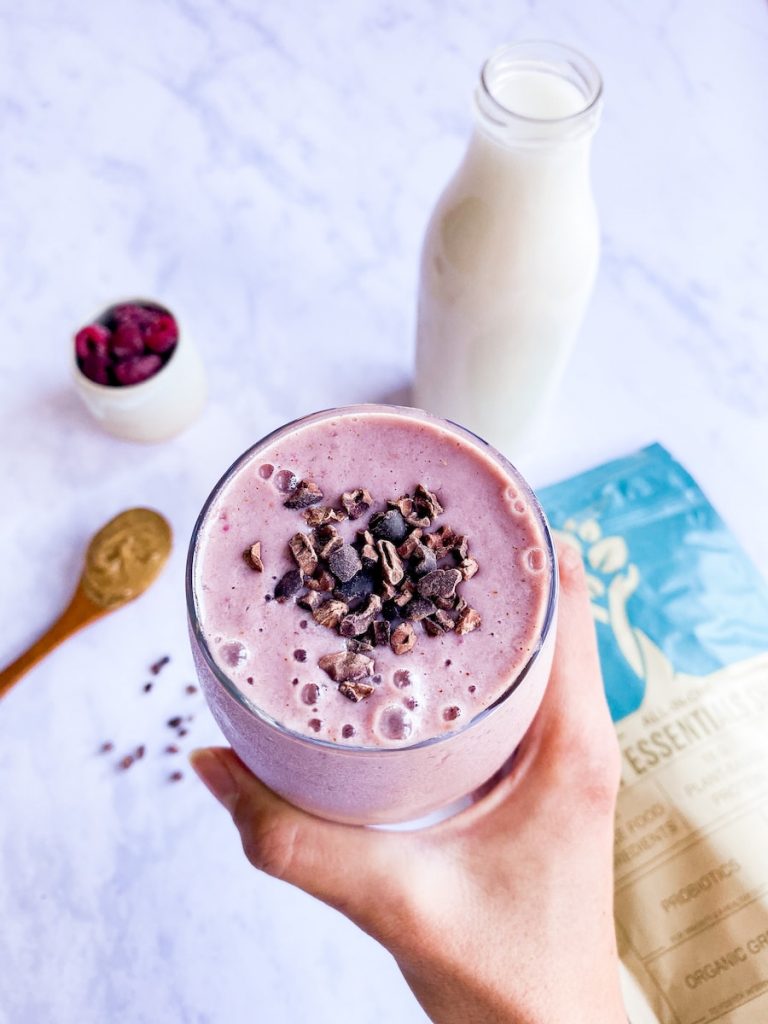Smoothies have taken the world by storm due to their delicious taste, versatility, and health benefits. If you’ve ever wondered how to make a smoothie that’s just right for your taste buds and nutritional needs, you’re in the right place. This comprehensive guide will teach you the art and science of creating the perfect smoothie. So, let’s dive in!
1. The Anatomy of a Smoothie
A smoothie is a drink made by blending fruits, vegetables, and other ingredients until they reach a liquid or semi-liquid consistency. Here’s a basic breakdown of what goes into a typical smoothie:
- Fruits and/or Vegetables: These are the main ingredients in a smoothie. They give it flavor, color, and health benefits. Both fresh and frozen variants work well.
- Liquids: Liquids help in blending the ingredients smoothly. They can range from milk (dairy or plant-based) and juice to water and even tea or coffee.
- Creamy Base: A creamy element like yogurt, nut butter, or avocado adds a smooth and rich texture to your smoothie.
- Sweeteners: Depending on your taste, you may want to add sweeteners like honey, maple syrup, or dates to your smoothie.
- Optional Add-ins: These include ingredients like seeds, protein powder, oats, spices, and extracts that can enhance the flavor or nutritional profile of your smoothie.
2. Choosing Your Fruits and Vegetables
Your choice of fruits and vegetables will largely determine the taste and nutritional value of your smoothie. Here are some popular options:
- Bananas: Bananas are a smoothie favorite due to their natural sweetness and creamy texture. They are also a good source of potassium.
- Berries: Strawberries, blueberries, raspberries, and blackberries pack a lot of flavor and antioxidants. They can be used fresh or frozen.
- Tropical Fruits: Pineapples, mangoes, and kiwis give smoothies a refreshing, tropical twist.
- Leafy Greens: Spinach and kale may not sound like typical smoothie ingredients, but they are a great way to add vitamins and fiber to your drink without altering the taste too much.
Remember, frozen fruits are great for giving your smoothie a frosty, thick texture. If using fresh fruits, consider adding ice cubes for a similar effect.
3. Picking the Right Liquid
The liquid you choose can greatly impact the taste and texture of your smoothie. Here are some options:
- Milk: Dairy milk makes smoothies creamy and rich. For a lactose-free or vegan alternative, try almond, soy, oat, or coconut milk.
- Juice: Fruit juices like orange, apple, or pineapple juice can add sweetness and flavor to your smoothie.
- Water: If you want to keep things simple, water is a good option. It won’t alter the taste of your fruits and veggies.
- Tea/Coffee: For a caffeine kick, consider adding cold brew coffee or chilled tea to your smoothie.
4. Adding Creaminess
A creamy base can elevate your smoothie from good to great. Here are some options:
- Yogurt: Plain or flavored yogurt can make your smoothie thick and creamy while adding a dose of protein and probiotics.
- Nut Butters: Peanut butter, almond butter, or cashew butter can add creaminess and a boost of healthy fats and protein.
- Avocado: This superfood not only adds creaminess but also provides heart-healthy fats and fiber.
- Banana: A ripe banana can also add a creamy texture and natural sweetness to your smoothie.
5. Sweetening Your Smoothie
While fruits often provide enough sweetness, you may still want to add a sweetener, especially if you’re using veggies or tart fruits. Here are some choices:
- Honey: This natural sweetener pairs well with most fruits and is a healthier alternative to refined sugar.
- Maple Syrup: This can add a unique flavor to your smoothie. Plus, it’s vegan-friendly!
- Dates: These are a natural, fiber-rich sweetener. Just make sure to remove the pit before blending.
6. Boosting Your Smoothie with Add-ins
Want to make your smoothie even more nutritious? Consider these add-ins:
- Seeds: Chia seeds, flax seeds, and hemp seeds are packed with fiber, protein, and healthy fats.
- Protein Powder: This can make your smoothie more filling. You can find plant-based options if you’re vegan or lactose intolerant.
- Spices and Extracts: Vanilla extract, cinnamon, turmeric, and ginger can add an interesting twist to your smoothie’s flavor profile.
- Superfoods: Consider adding powders like spirulina, acai, or maca for an extra health boost.
7. Blending Your Smoothie
The order in which you add your ingredients to the blender can impact the smoothie’s texture. Here’s a suggested order:
- Add the liquids first. This will help the blender blades move more freely.
- Add soft ingredients. This includes fresh fruits and leafy greens.
- Add hard ingredients. Frozen fruits, ice cubes, and large chunks of vegetables should go in last.
Start the blender at a low speed, then gradually increase it. Blend until your smoothie is smooth and creamy.
8. Enjoying Your Smoothie
Once your smoothie is properly blended, it’s ready to enjoy! Pour it into a glass, or if you’re on the go, a travel-friendly bottle. Remember, smoothies are best enjoyed immediately after making them, as they can separate or lose flavor over time.
9. Customizing Your Smoothie
One of the best things about smoothies is that they are highly customizable. You can experiment with different fruits, liquids, creamy bases, sweeteners, and add-ins until you find your perfect combination. Here are a few ideas to get you started:
- Tropical Delight: Blend mango, pineapple, banana, coconut milk, and a dash of honey for a tropical-themed smoothie.
- Berry Blast: Combine your favorite berries with almond milk, Greek yogurt, and a touch of maple syrup for a berrylicious treat.
- Green Goddess: Mix spinach, kale, banana, apple juice, and a spoonful of chia seeds for a nutrient-packed green smoothie.
10. Mastering Smoothie Making: Final Tips
Now that you have a basic understanding of how to make a smoothie, here are some additional tips to help you master the art:
- Keep a variety of frozen fruits on hand: This way, you’re always ready to whip up a smoothie, even if you don’t have fresh fruits available.
- Customize to your dietary needs: If you’re lactose intolerant, vegan, or following a specific diet, you can still enjoy smoothies. Simply choose plant-based milk, vegan protein powder, and other suitable ingredients.
- Adjust the thickness: If your smoothie is too thick, add more liquid. If it’s too thin, add more frozen fruits or a creamy base.
- Make it a meal: By adding protein and fiber-rich ingredients, you can turn your smoothie into a complete meal. This is great for breakfast or a post-workout snack.
That’s it! You now know how to make a smoothie that’s tasty, nutritious, and just the way you like it. Happy blending







